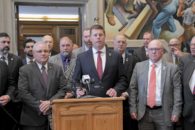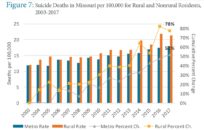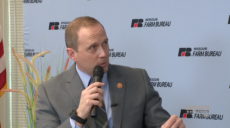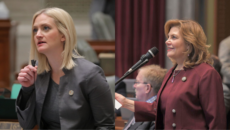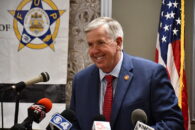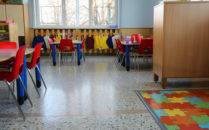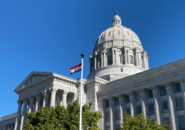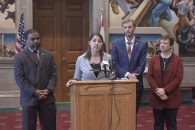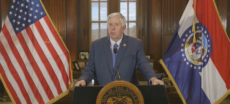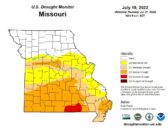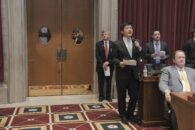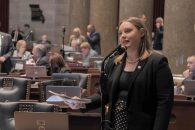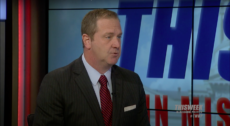JEFFERSON CITY, Mo. — Centers for Disease Control and Prevention (CDC) partners will arrive in the Springfield and St. Louis areas over the weekend to bolster the efforts of local schools to provide a safe learning environment during the COVID-19 pandemic, Gov. Mike Parson said Thursday.
The arrivals are part of a partnership between the Missouri Department of Health and Senior Services (DHSS), Missouri Department of Elementary and Secondary Education (DESE), the Institute for Public Health at Washington University, St. Louis University, and the CDC which aims to better understand the impact of COVID-19 mitigation strategies on the transmission of the virus in school settings.
“We know that COVID-19 is not going away soon, so it is important that we continue to evaluate the guidance we’re issuing at the state level to ensure our procedures are effective and sustainable,” Parson told reporters Thursday.
The project will begin in December before students go on winter break and is expected to wrap up after about three months. When a positive case of COVID is identified in the school, the partners will begin the process of contact tracing and ask those individuals who came in contact with the infected person to self-monitor for symptoms. They will be offered saliva testing developed by Washington University, which is intended to help identify possible transmission.
The project will also involve a survey of school-based mitigation strategies in other schools throughout the state to better understand the measures being implemented in different regions.
CDC partners will be on-site at Washington University, St. Louis University, and local schools for the first two weeks to get the program started. After that, the effort will mostly be conducted virtually or by phone.
“This study will provide valuable evidence to understand how we can set them up for success and prevent disease spread. Springfield has been a key player in establishing the evidence of the value of masking, and we hope this study will further advance our scientific understanding,” Springfield-Greene County Health Department Director Clay Goddard said in a statement.
DHSS and DESE have a school reopening and operating guideline that was updated on Nov 12. The 19-page document highlighted screening, physical distancing, and masks or face coverings as important proactive strategies districts can implement to mitigate the spread of COVID-19. The document recommended schools assign students to cohorts and limit their exposure to others; give students assigned seats both on the bus and in the classroom; and keep students around the same teacher throughout the day, rather than having them rotate. At this time, there are no statewide health-related mandates for schools to be open and operating, but the guideline emphasized there may be local ordinances for school leaders to consider.
With the update, Missouri altered its quarantine guidelines to say students and staff at schools with a mask mandate who adhere to masking recommendations may be prevented from being identified as “close contacts” if they have been exposed to another individual who tests positive for COVID-19 and was also properly masked. Close contacts are required to quarantine under current guidelines, leading to a large number of students and staff moving to remote work.
Some Missouri officials urged schools in their districts not to adopt the new guidelines.
“Our administrators and teachers are working extremely hard to provide the best education possible for students during these unprecedented times,” Jason Newland, MD, Pediatric Infectious Diseases Specialist at Washington University School of Medicine, said.
Participation in the program for school districts, students, families, faculty, and staff is completely voluntary.

Conner Kerrigan is a writer and communications professional who lives in Columbia. He joined The Missouri Times team as the business manager in late 2020. Originally from Chicago, Conner is a graduate of Millikin University in Decatur.
Contact Conner at conner@themissouritimes.com.





